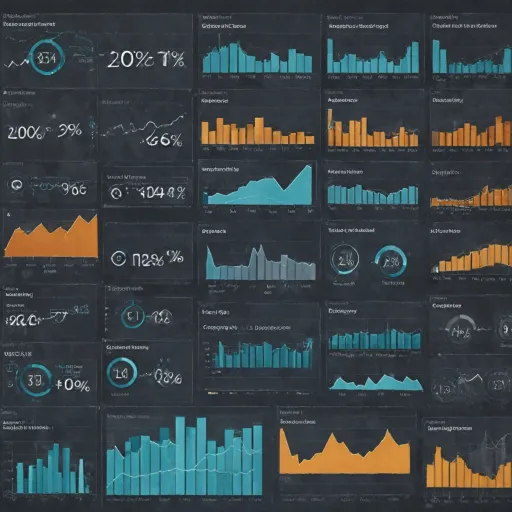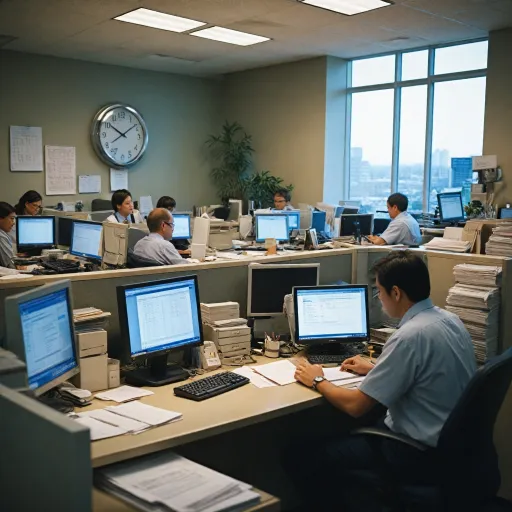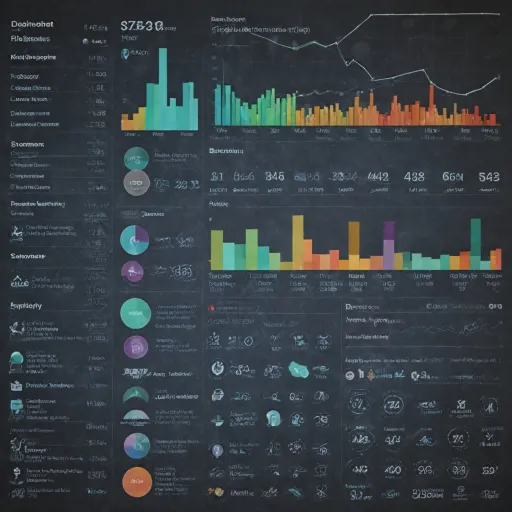
Understanding Centralized HR Services
Defining Centralized HR Services
Centralized HR services, as the name suggests, consolidate human resource functions into a single unit, responsible for managing a range of operations for an organization. This centralized model offers a contrast to the decentralized approach, where HR responsibilities are distributed across various local teams and business units. By integrating these services, a centralized structure aims to streamline processes, enhance decision-making, and optimize resource allocation within an organization. A centralized HR model provides a well-structured operating model that caters to both the long-term strategic goals of a business and the immediate needs of its employees. Through this structure, organizations benefit from more consistent HR policies and practices, leading to improved data management and analytics capabilities. These shared services offer a cohesive chain of command, allowing for more uniform decision-making across all levels and regions of the business. While the centralized approach provides numerous advantages, it also requires careful implementation to address potential challenges. Understanding the dynamics of centralized services, compared to decentralized ones, is crucial for achieving the desired outcomes in employee engagement and operational efficiency. Read more about addressing challenges in implementing centralized HR services to understand the intricacies involved in this transformation. For organizations considering the shift towards a centralized HR system, examining how these services can be effectively integrated into their existing structures and processes will play a pivotal role in enhancing the employee experience and driving business success.Benefits of Centralized HR Services in Analytics
Advantages of Unified HR Systems for Enhanced Insights
Centralized HR services provide a host of benefits, especially in the realm of analytics, making them a compelling choice for organizations aiming for efficiency and strategic advantage.
- Consolidated Data Management: A centralized model brings all HR data under one roof, encouraging a more cohesive data management approach. This structure ensures that data from various business units is easily accessible, enabling quicker and more accurate business decisions.
- Improved Resource Allocation: By employing centralization, organizations can streamline human resources processes which in turn assists in effective resource management. The centralized team can allocate tasks better, ensuring that the right employees are engaged in the right roles at the right time, thus improving overall productivity.
- Enhanced Employee Experience: Shared services enhance the employee experience by offering a unified communication chain, reducing confusion that might arise from a decentralized setup. Employees receive timely and consistent information and support, which boosts engagement and satisfaction.
- Consistency in Decision-Making: Centralized services create a uniform operating model that ensures consistent decision-making across the organization. Such a framework not only supports strategic goals but also facilitates responsiveness to changes in market conditions.
- Advanced Analytical Insights: The collection and analysis of centralized data empower organizations with long-term analytics-driven insights. These insights enhance the understanding of employee trends and behaviors, which aids in optimizing team workflows and business processes.
The centralized HR model brings together resources and processes in a structured manner, driving a significant improvement in analytics capabilities. For more detailed strategies on enhancing these organizational models, you might find this resource insightful.
Challenges in Implementing Centralized HR Services
Overcoming Obstacles in Centralizing HR Services
Centralizing HR services offers numerous advantages, but it is not without its challenges. One of the primary hurdles organizations face is the transition from a decentralized structure to a centralized model. This shift demands not only changes in data management and operating processes but also in the organization's culture and employee engagement efforts. To start, adapting to a centralized services model can affect the chain of command. Employees who are accustomed to a more local, decentralized approach may find it difficult to adjust. Clear communication and transparent decision-making processes are critical to easing this transition. Additionally, the integration of shared services and centralized teams can lead to initial inefficiencies. These inefficiencies often stem from the lack of alignment between business units and centralized services. To tackle this, organizations must ensure that strategic goals are clearly defined and communicated across all levels. Data management poses another significant challenge in adopting a centralized operating model. Organizations must ensure seamless collection, processing, and storage of data while maintaining data integrity and security. Robust systems and tools are necessary to support these processes, as they enable improved analytics and informed decision making. Flexibility and responsiveness are essential elements that might be compromised during centralization. Organizations must strike a balance between maintaining a centralized structure and allowing for some local responsiveness. Incorporating feedback from employees and local teams into ongoing centralization efforts can help to maintain an employee-centric approach. Finally, a centralized approach must be supported by best practices in change management to foster employee engagement and minimize resistance throughout the transformation. Organizations can enhance the employee experience by offering training and development tailored to the new centralized environment. Despite these challenges, many organizations have successfully navigated the shift toward centralization by leveraging long-term strategic planning and thorough market condition analysis. To explore more on the challenges of transitioning to centralized HR services, visit this article on understanding delays in HR training approvals.Case Studies: Success Stories in Centralized HR Services
Real-World Successes with Centralized HR Services
People often ask if moving to a centralized HR services model truly makes a difference. Real-life case studies can provide insights into how organizations have achieved operational efficiency and improved analytics through centralization. Consider an international organization that transitioned from a decentralized to a centralized HR structure. This shift involved coordinating the roles of local offices, all while keeping them aligned with the strategic goals of the central management. Through such restructuring, the company improved its processes and decision making by using a centralized data management system. Here are some key takeaways from businesses that have successfully moved to a centralized HR model:- Improved Employee Experience: By streamlining HR processes and delivering consistent services, companies noted an improvement in employee engagement and satisfaction.
- Enhanced Flexibility and Responsiveness: Centralized services allowed for quicker adaptation to changing market conditions, giving businesses a competitive edge.
- Efficient Resource Management: Implementing shared services reduced redundancy and increased the efficiency of HR operations across all business units.
- Data-Driven Decisions: With centralized analytics, teams gained more accurate insights, enabling data-driven decision making and improved performance outcomes.
Tools and Technologies Supporting Centralized HR Services
Essential Tools for Centralized HR Services
To optimize centralized HR services, having the right tools and technologies makes all the difference. These solutions not only enhance data management but also empower teams, streamline processes, and bolster efficient decision making within an organization.Centralized HR Information Systems
Adopting a centralized HR Information System (HRIS) helps organizations efficiently manage employee data, improve resource allocation, and support the HR operating model. A robust HRIS serves as the nerve center, facilitating employee experience and engagement by enabling access to critical information across business units.Analytics Platforms
Centralized analytics platforms are key in transforming raw data into insightful reports that guide strategic goals. These tools enable teams to make data-driven decisions, improve processes, and evaluate employee performance. By leveraging analytics in a centralized structure, organizations can better track trends, anticipate market conditions, and refine their decision making.- Business Intelligence (BI) Software: Provides real-time insights and dashboards that support various HR activities like recruitment and performance assessments.
- Predictive Analytics Tools: Forecast future trends to shape strategic planning and improve flexibility responsiveness.
Collaboration Tools
Communication and collaboration are vital in a model centralized. Implementing tools that facilitate seamless interaction among decentralized teams and centralized services helps maintain coherence and enhances employee engagement across the organization.- Project Management Software: Allows tracking of HR projects, enhances transparency, and aligns tasks with strategic objectives.
- Internal Communication Platforms: Enables local teams to stay synchronized and connected within a centralized model, fostering a unified employee culture.
Data Governance and Security Tools
Given the centralized structure of HR services, protecting sensitive employee data is crucial. Implementing comprehensive data governance solutions ensures data accuracy, integrity, and privacy, fortifying the organization's data management framework.- Access Control Systems: Regulates who can access specific data fields, maintaining security while allowing authorized personnel to obtain necessary information.
- Data Encryption Tools: Protects sensitive information during storage and transmission within centralized services, aligning with best practices for HR analytics.













